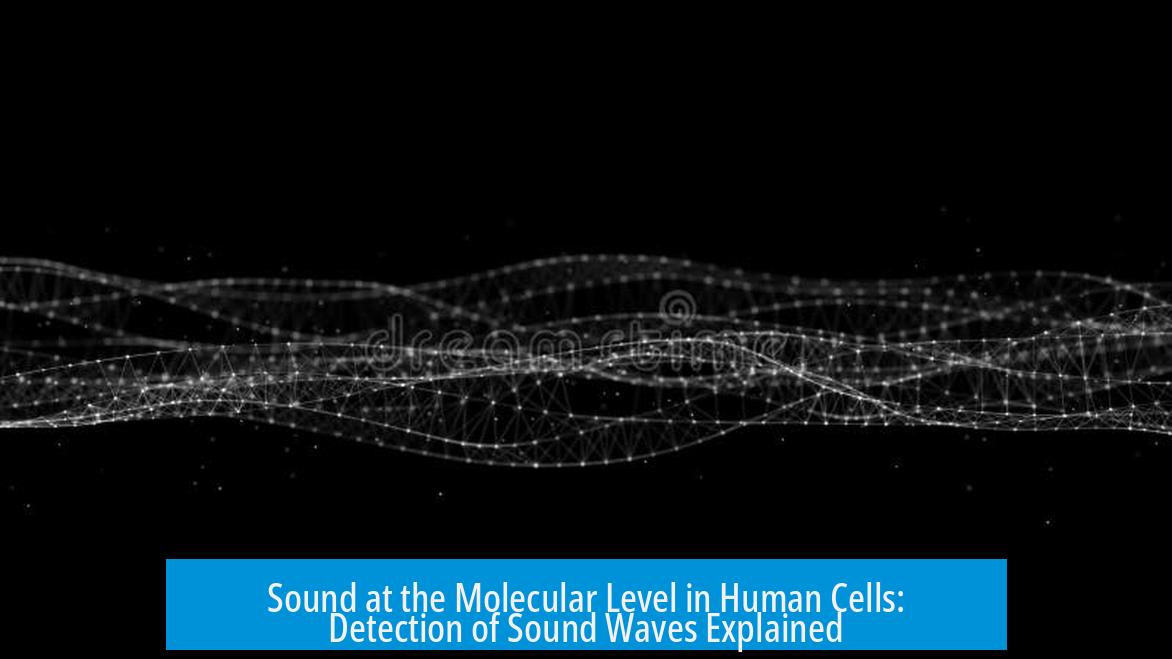Is There Sound at the Molecular Level Inside a Human Cell?
Sound exists inside human cells as mechanical vibrations at the molecular level. These vibrations arise from forces acting on atoms within cellular components. Detecting such sound waves is theoretically possible but practically challenging due to the scale and nature of these vibrations.
Sound as Mechanical Vibrations Within Cells
Sound arises from pressure changes caused by mechanical forces acting on atoms. Within a human cell, atoms constantly move, interact, and vibrate due to various biochemical processes. These interactions can generate mechanical vibrations analogous to sound waves, although they occur at a much smaller scale than audible sound.
Studies demonstrate that bacterial cells produce detectable mechanical vibrations. Using sensitive tools, researchers have observed vibrations linked to bacterial functions like cell division. This suggests that similar vibrational phenomena exist in human cells too, given their complex molecular machinery.
Challenges in Detecting Molecular Sound Waves
Recording these vibrations presents major challenges. The minute scale means detection systems risk disturbing the natural vibrations. Amplifying signals from such small origins to a scale discernible by instruments often reduces the signal-to-noise ratio.
- Conventional microphones cannot pick these vibrations; molecular-scale sensors are required.
- Atomic Force Microscopy (AFM) tips are proposed as potential detectors by acting like “microphones”.
- Laser-based methods might capture vibrations by monitoring changes in stringency or interference.
Technical Difficulties and Current Research
Amplification of molecular vibrations to macroscale sound waves is complicated. Measurement instruments may perturb the system, altering the vibrations they aim to detect. This complicates both obtaining and interpreting the data.
Research continues to explore advanced techniques for measuring mechanical forces at nanoscale resolution, hoping to clarify these subtle vibrations inside cells.
Summary of Key Points
- Sound at molecular levels in human cells exists as mechanical vibrations on atoms.
- Bacterial cell vibrations provide indirect evidence supporting sound in human cells.
- Detection methods like AFM tips or lasers show promise but face significant technical limitations.
- Amplification and signal interpretation challenges remain obstacles.
- Understanding cellular vibrations may open new paths for studying cell function and health.
Is there sound at the molecular level inside a human cell?
Yes, sound exists at the molecular level inside cells. It comes from mechanical vibrations and pressure variations acting on atoms within the cell.
Can sound waves from molecular vibrations in human cells be detected?
Detecting these sound waves is very difficult but possible. Tools like lasers or atomic force microscope (AFM) tips might be used, though measurement challenges remain.
Why is it hard to record sound at the molecular scale inside cells?
Measuring sound at this scale can disturb the cell. Also, amplifying molecular vibrations to audible levels causes high noise and weak signals, making detection tricky.
Has sound been detected in any living cells?
Yes, bacterial cell vibrations related to cell division have been detected using advanced instruments. This suggests similar detection is possible in human cells.
What technologies could help capture sound inside cells?
Techniques like laser-based sensing and AFM tips show promise to act like tiny microphones, capturing vibrations without heavily disturbing the system.





Leave a Comment